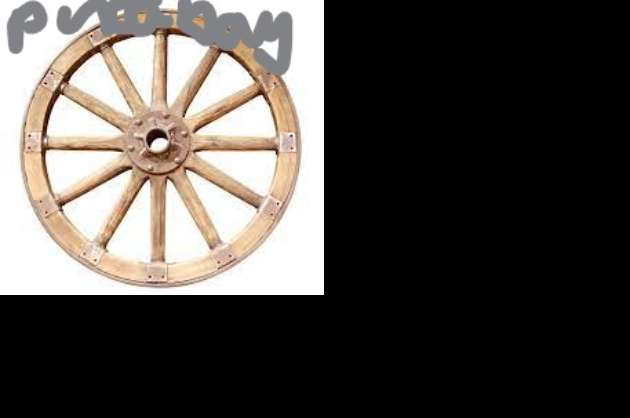Anupama Nair
What is the difference between humans and animals? The answer is simple – the power of thinking. If we didn’t we would have been still like early men and lived in caves still. There would have been no inventions and our lives would have been different. I am going to talk about inventions that changed human lives and made our lives simpler and easy to live
The first major discovery was fire. When humans, first used fire, is still not definitively known, but, like the first tools, it was probably invented by an ancestor of Homo Sapiens (man) as the evidence of burnt material can be found in caves used by Homo Eructus (meaning "upright man") around one million or maybe even one and half million years ago. However, the invention of fire helped men to stop eating raw food and instead, cook it and also keep warm during cold days and nights.
This is a matter of great pride to us Indians. According to historians, the Indus Valley Civilization had revealed the evidence of dentistry being practiced as far back as 7000 BC. One site in Mehrgarh (modern day Pakistan) even showed evidence of healers curing tooth disorders with bow drills. Incredible isn’t it. Another feature of the Indus Valley Civilization was water-flushed toilets. Both in Harappa and Mohenjo-Daro, almost every home had a flush toilet, connected to a sophisticated sewage system. Areas of the Indus Valley Civilization in both now-Pakistan and Western India have had rulers (scales) of ivory uncovered from ruins. One such specimen was even calibrated to 1/16 of an inch—less than 2 millimeters. These kinds of rulers were clearly very prominent, as even bricks of the valley’s buildings were found to follow the same measurements. The earliest existence of weighing scales also dates back to the Indus valley civilization, where balances were used to compare measure and compare goods in trade.
The Indian subcontinent was the birth place of Ayurveda and Yoga, around 5000 BC. The therapies generally include complex herbal compounds, minerals and metal substances. Indian physicians were known to practice a different kind of cataract surgery than that was known to the Greeks. It was performed with a tool called the Jabamukhi Salaka, a curved needle used to loosen the lens and push the cataract out of the field of vision. Greek scientists of the time travelled to India to see these surgeries, and the technique was even introduced into China from India.
The wheel is often quoted as the single most important advance in early technology. It is sometimes said to have evolved from the potter’s wheel. Both are first known at approximately the same period, around 3000 BC. But geographical origin of the invention is still not known.
In early technology a wagon wheel can only be made from wood. Several of the earliest known wheels have been found in the heavily forested regions of Europe.
Around 3000 BC, the ancient Egyptians had developed a technique for making paper from the pith of the papyrus plant, commonly seen along the bank of the Nile. Long strips were woven together and weighted down to bind them into a strong, thin sheet. The Egyptians also invented pens made of cut reeds, which were strong enough to write on the papyrus, and mixed soot or other organic material with beeswax and vegetable gum to make ink.
The world’s first university was established in Takshashila in 700 BC. It is estimated that more than ten thousand students from all over world studied more than sixty subjects. The University of Nalanda was built in the 400 BC. The Chinese scholar Hiuen Tsang studied in Nalanda and his writings tell us about the greatness of the University. Unfortunately, the University was burnt by Bakhtiyar Khilji. What a great loss to the world
The word “democracy” comes from the Greek term demokratia, literally meaning “rule by the people.” The word and the concept was introduced in 507 BC by Cleisthenes, ruler of the Greek city-state of Athens. This form of popular government consisted of three separate institutions: the ‘ekklesia’, or Assembly, which wrote laws and dictated foreign policy; the ‘boule’, a council of representatives chosen from the different Athenian tribes; and the ‘dikasteria’, a popular court system. The United States (1776) is the world’s oldest democracy.
Written evidence of martial arts in Southern India dates back to 2nd century BC to 2nd century AD. Kalarippayattu was Indian martial arts system developed in ancient Kerala. It is still very popular. For all its importance, it may surprise you to learn that zero is a relatively recent concept in human history, though it still has its roots in ancient times. The more complete vision of zero didn’t emerge until the 7th century in India, when the Hindu astronomer Brahmagupta wrote rules for using zero in mathematical operations and equations, introducing the concept that zero could be seen as a number of its own.
The first windmills were constructed before the 9th century in a region spanning eastern Iran and western Afghanistan. Windmills were first mentioned in Europe in the 12th century. There is a reference to one in France in 1180, and a few years later to another in England. Since it was the time of crusades, it is probable that the idea has been brought from the Middle East to Europe.
The Gunpowder was invented in China around 1040 AD, when a Chinese manual on warfare was issued under the title “Compendium of Military Technology”, which was the first document to describe gunpowder.
There has been much argument where and when the compass was first developed. The earliest reference to such a device is in a Chinese manuscript of the late 11th century, within the next century and a half, it featured also in Arabic and European texts. What we need to understand is that this instrument made possible the great age of maritime explorations which began in the 15th century under Christopher Columbus. Even today no one understands why a magnet points to the north.
Next I am going to talk about an invention which was so important in our lives – invention of printing with movable metal type in the 15th Century by Johannes Gutenberg in Germany. The details of this epoch-making invention are disappointingly unclear, but there is general agreement that the first large-scale printing workshop was that established at Mainz by Gutenberg, that was producing a sufficient quantity of accurate type to print a Vulgate Bible around 1455 AD. It also made heavy demands on the paper industry, which had been established in Europe since the 12th century but had developed slowly till the invention of printing and the subsequent trend for the printed word. A bookworm like me thanks Gutenberg for his invention as I cannot imagine a life without books.
Before the 15th century, people knew only three continents – Asia, Europe and Africa, which were the home to many ancient civilizations. India was known as the “sone ki chidiya or the golden bird”. Every foreign power wanted to conquer India and the Middle Ages were called Dark Ages in India, as all the greatness of the ancient times were buried in the sands of time. We were slaves to reign of terror as cruel people like Ghori, Ghazni, Khilji, Taimur and finally the Mughals plundered our motherland. The royal families of Europe were addicted to Dacca Muslin (a brand name of pre-colonial Bengal textile, especially of Dacca) and Indian spices like cardamom, cashew nuts etc. Till the 15th century Arabs came to India, purchased these products and sold it to Europe. But the conquest of Constantinople by the Turks in 1453 put an end to the silk trade route. The Europeans were desperate to find new trade route to India by sea. Christopher Columbus from Genoa (Italy)set on a journey to find India and he discovered America on October 12, 1492. Till his death he never discovered that the new lands he discovered was America and not India. Finally, Vasco Da Gama, a Portuguese sailor landed in Calicut in 1498, which led to many other Europeans reaching India. Finally, the British became masters of the entire subcontinent by end of 18th century and ensured India was under colonial rule and imperialistic powers till 15th August 1947.
Then there was the invention of Steam Engine in England at the time of Industrial Revolution. Steam engine, is a machine using steam power to perform mechanical work through generation of heat. In a steam engine, hot steam, usually supplied by a boiler expands under pressure, and part of the heat energy is converted into work. However, in the 17th century attempts were made to harness steam for practical purposes. In 1698 AD, Thomas Savery patented a pump with hand-operated valves to raise water from mines by suction produced by condensing steam. In 1712 AD, another Englishman, Thomas Newcomen, developed a more efficient steam engine with a piston separating the condensing steam from the water. In 1765 AD, James Watt improved the Newcomen engine by adding a separate condenser to avoid heating and cooling the cylinder with each stroke.
The combination of the steam locomotive and a permanent travel way of metal rails was the next goal of the scientists. Experiments were made in the 19th century. Stockton and Darlington Railway was opened in 1825 AD, and after five years of experience with steam locomotives led to the Liverpool and Manchester Railway, when it opened in 1830, started the first fully time-tabled railway service with scheduled freight and passenger traffic relying entirely on the steam locomotive for traction. This railway was designed by George Stevenson. India's first passenger train was operated by the Great Indian Peninsular Railway and was hauled by three steam locomotives (Sahib, Sindh and Sultan), ran for 34 kilometers with four hundred people on board in fourteen carriages between Bori Bunder (Bombay) and Thane on 16 April 1853.
In the Middle Ages, the Indian inventions were few as we were living in Dark Ages and in slavery. It was the times when centers of learning i.e., Universities were burnt. It took nearly nine centuries to be free. Hope we see more scientific inventions now.
The development of electricity as a source of power preceded the conjunction with steam power late in the 19th century. The pioneering work had been done by an international collection of scientists including Benjamin Franklin of Pennsylvania (US), Alessandre Volta of the University of Pavia (Italy), and Michael Faraday (Great Britain). Both the generators and motors underwent substantial development in the 19th century. In particular, French, German, Belgian, and Swiss engineers evolved the most satisfactory forms of armature (the coil of wire) and produced the dynamo, which made the large-scale generation of electricity commercially feasible
In the United States Thomas Edison applied his inventive brain in discovering fresh uses for electricity, and his development of the carbon-filament lamp showed how this form of energy could rival gas as a domestic illuminant. The, subsequent spread of this form of energy is one of the most remarkable technological success stories of the modern times, but most of the basic techniques of generation, distribution, and utilization had been mastered nearly two centuries before. Can you imagine a life without electricity?
The first photograph was taken in 1826 or 1827 by the French physicist J.N. Niepce using a pewter plate coated with a form of bitumen that hardened on exposure. His partners used silver compounds to give light sensitivity, and the technique developed rapidly in the middle decades of the century. By the 1890s George Eastman of the United States started manufacturing cameras and celluloid photographic film for the popular market, and that was the first experiment with cinema, and were beginning to attract attention.
The electric telegraph, was made into a practical proposition for use on developing the British railway system by two inventors, Sir William Cooke and Sir Charles Wheatstone, who worked together and took out a joint patent in 1837. Almost at the same time, an American scientist, Samuel Morse devised the signaling code that was subsequently adopted all over the world. The telegraph system also played an important part in the opening up of the American West by providing rapid aid in the maintenance of law and order.
Alexander Graham Bell, best known for his invention of the telephone, revolutionized communication. His interest in sound technology was deep-rooted and personal, as both his wife and mother were deaf. While there’s some controversy over whether Bell was the true pioneer of the telephone, he started the Bell Telephone Company in 1877. He was born in Scotland, later migrated to Canada and finally settled down in the United States. In 1871, Bell started working on the harmonic telegraph — a device that allowed multiple messages to be transmitted over a wire at the same time. By 1875, Bell, with the help of his partner Thomas Watson, had come up with a simple receiver that could turn electricity into sound. Scientists, like Antonio Meucci and Elisha Gray, were working on similar technologies, and there’s confusion over who should be credited with the invention of the telephone. It’s said that Bell raced to the patent office to be the first to secure the rights to the discovery. After getting his telephone patent, he made the inaugural telephone call to Watson, and said, “Mr. Watson, come here. I want you.” He even refused to have a telephone in his study, fearing it would distract him from his scientific work.
The dream of human flight must have begun with observation of birds flying through the sky. In our great epic Ramayana, Ravana the demon king had a flying chariot called “Pushpak Viman” where the Sanskrit word means flying object. In other holy scriptures like the Bible, we read about the flying angels. The story of the invention of the airplane begins in the16th to 18th centuries, with the first research into aerodynamics—the study of the forces operating on a solid body (for instance, a wing when it is immersed in a stream of air). For a millennia, however, progress was retarded by attempts to design aircraft that emulated the beating of a bird’s wings. The Wright brothers – Orville and Wilbur were the two American aviation pioneers who invented, build, and flew the world's first successful motor-operated airplane in 1905. They were also the first to invent aircraft controls that made fixed-wing powered-flights possible. In 1914, the world's first scheduled passenger airline service took off, operating between St. Petersburg and Tampa in Florida (USA).
The dream of seeing distant places is as old as the human thoughts. Priests in ancient Greece, studied the inside of birds, trying to see in them what the birds had seen when they flew over the horizon. They believed that their gods, on Mount Olympus were gifted with the ability to watch human activity all over the world. The opening scene of William Shakespeare’s play Henry IV, Part 1 presented the character Rumour, upon whom the other characters rely for news of what is happening in the far corners of England.
Television (TV), is the electronic delivery of moving images and sound from a source to a receiver By extending the senses of vision and hearing beyond the limits of physical distance, television has had a considerable influence on society. The TV as we know was eventually used by John Logie Baird and Charles Francis Jenkins in 1925. to build the world’s first successful televisions.
Charles Babbage, an English mathematician and inventor is credited with having conceived the first automatic digital computer. The idea of mechanically calculating mathematical tables first came to Babbage in 1812 or 1813. Later he made a small calculator that could perform certain mathematical computations to eight decimals. During the mid-1830s Babbage developed plans for the Analytical Engine, the forerunner of the modern digital computer. In that device he planned the capability of performing any arithmetical operation on the basis of instructions received from punched cards, a memory unit to store numbers, sequential control, and most of the other basic elements of the present-day computer.
The desire to travel to moon was a dream of the modern man. Let us see, how it was achieved. In the middle part of the 20th century, space ships were made by both America and Russia. Lyka, a stray dog from Moscow was the first living being to travel to space in a space ship called Sputnik II in 1957. But unfortunately, she died in space. Then it was the turn of man in space. Yuri Gagarin was a Russian pilot, who became the first man to travel in space, achieving a major milestone in the history of space travel. His space ship Vostok I, completed one orbit of the Earth on 12 April 1961. Gagarin became an international celebrity and was awarded many medals and titles, including “the Hero of Soviet Union”, his nation's highest honor.
1969 was again a special year in Space journey. Apollo II was the space ship that first traveled with humans to the moon – Neil Armstrong, Buzz Aldrin and Michael Collins, and was truly a historic moment. Finally, the dream of man to travel to the moon was fulfilled. Armstrong became the first person to step onto the lunar surface and it was truly ““That's one small step for man, one giant leap for mankind” as Armstrong said.




























